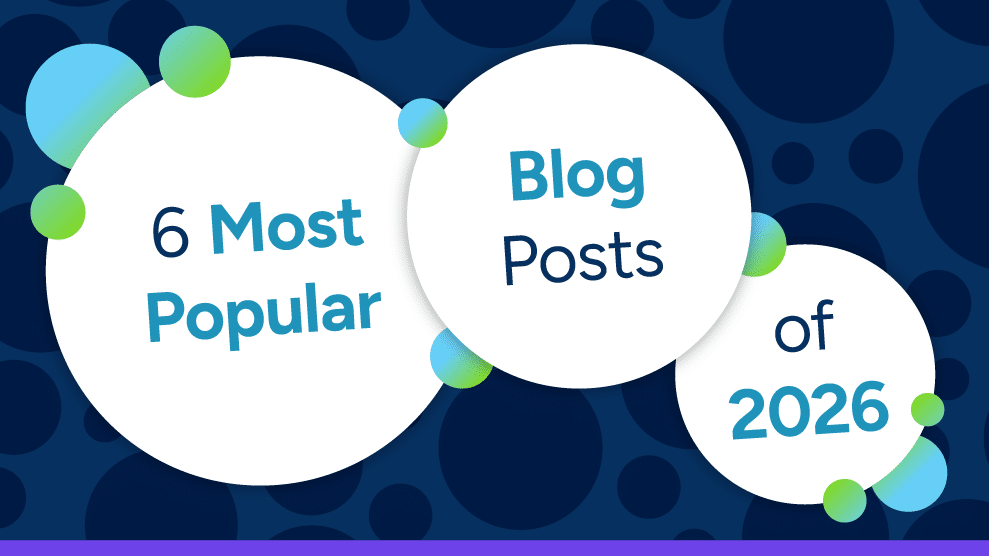
6 Most-Popular Blog Posts of 2025
Ethics and Compliance


Let’s look at why inclusive language is so important, why exclusionary language can be harmful—and how awareness, introspection and education can support our ability to create a more inclusive work environment.

Language is ever evolving. In the history of language, words have emerged, disappeared and completely changed in meaning. And today, we are at a pivotal time in history. We have a new awareness of how our language choices can either contribute to a more inclusive work environment or create barriers that can harm and divide. Let’s look at why inclusive language is so important, why exclusionary language can be harmful—and how awareness, introspection and education can support our ability to create a more inclusive work environment.
One description of inclusive language published by LinkedIn characterizes it this way, “Inclusive language means avoiding biases or discriminatory slang when choosing words and phrases. Certain expressions may discriminate against groups of people based on gender bias, ability, socioeconomic status or race bias. Words matter, so speaking respectfully in the workplace will create a more accepting environment. Inclusive language brings everyone into the conversation.”
Adapting to the use of inclusive language offers us a chance to grow and become better communicators. It also helps leaders and employees become better allies .
– BEHAVORIAL SCIENTISTS IN HARVARD BUSINESS REVIEW
By contrast, exclusionary language, whether deliberate or not, can cause people to wince and withdraw from a conversation. Worse yet, hurtful words can cause people to ruminate on a comment long after it is made—at best creating a distraction and at worst causing deep humiliation and distress for the individual on the receiving end. So, that’s why it’s important that before we talk about inclusive language, we consider the damage that exclusionary language can do.
Think of a time when someone said something that felt hurtful. Did it leave you with a bad feeling that lingered? Did you react in the moment, or did you let it pass? The things that people say can stay with us for a very long time. And just as language can be uplifting and motivating, it can push us down, distract us from our work and make us feel uncomfortable or worse yet, unworthy.
Research shows that exclusionary language can have a harmful effect in the workplace. At its worst, exclusionary language can take the form of slurs and derogatory remarks meant to minimize and demean–or it might be revealed through microaggressions sometimes disguised as offhanded remarks or jokes. The comments might even be followed up with something like, “I didn’t mean anything by that.” or “Why are you being so sensitive?” or “Come on. I’m just kidding!” These types of qualifiers can cause further harm, minimizing and putting the person’s feelings into question. A culture that tolerates exclusionary language, and follow-up comments like these to justify the original remarks, is the antithesis of inclusive. But let’s also look at more subtle variations of exclusionary language that are just as important to understand and address.
First of all, let’s agree that most people are not inherently mean. Aside from people who are deliberately trying to hurt others, likely out of fear or a deep insecurity, most of the rest of us are simply lacking awareness. We don’t understand that some of the language we are using could be potentially hurtful to someone.
To illustrate this point, diversity, equity & inclusion author, researcher, and strategist, Raven Solomon uses herself as an example. She explains that being inclusive is a life-long journey that requires ongoing introspection and education, and stresses the importance of being intentional with our language.
If you are using words like these in your everyday language, you are not alone. The point of the list above is to show that we all say things that we don’t realize may be exclusionary—or which may have painful historical connotations that can further wound and divide. This example also shows that if an expert in diversity, equity and inclusion is not beyond putting herself through an exercise to prompt introspection and change, then we can all benefit from doing the same.
For HR professionals, creating inclusivity is particularly important, and especially difficult. When it comes to language, not only do you need to cultivate your own awareness through introspection, but you also need to help others do the same. The answer is in finding opportunities for your employees to learn and grow by providing them with the kind of education and training that will engage them in meaningful interactions and provide them with a window into how language choices can make others feel and react.
One of the best ways to do this is through storytelling, where real people describe how they felt when someone said something hurtful—or how much better they felt when another person intervened on their behalf. The right kind of instruction can open new doors for employees to create their own personal discoveries and help them to learn how to use inclusive language to support each other on a daily basis.
Here are some steps that everyone can take to make their language more inclusive.
The suggestions above are just a few ideas for how you can enhance your awareness and reevaluate your language choices. But the most important thing to remember is that being inclusive is a life-long journey. It will be full of mistakes, but as long as you truly care about treating others with the respect and understanding they deserve, the journey will be well worth taking.
This article was originally published in HR Daily Advisor on January 17
For more information on Traliant’s Inclusive Language training click here.